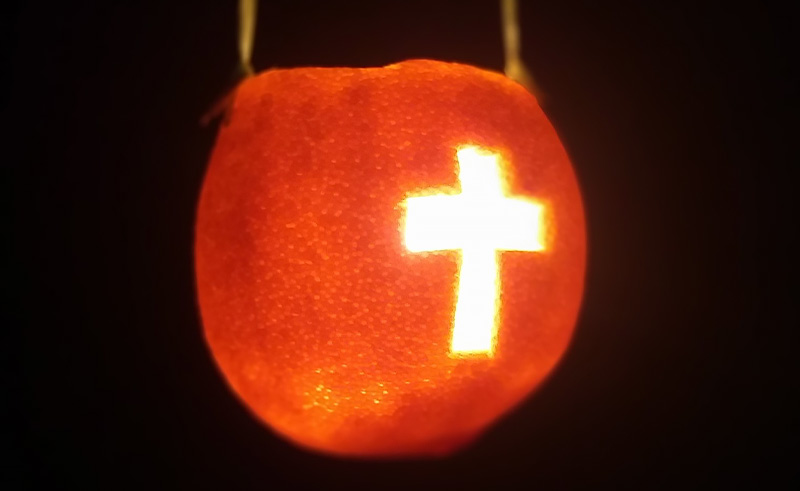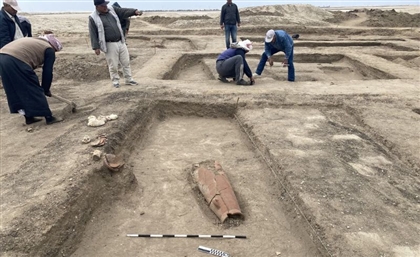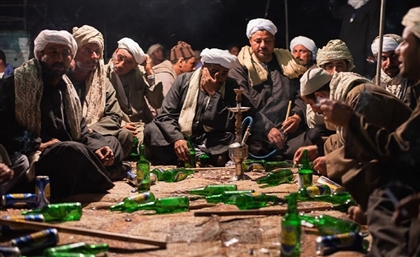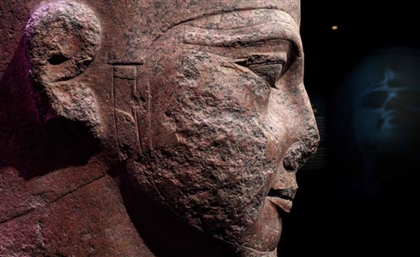What's the Deal With Orange Lanterns During Eid El-Ghetass?
On the eve of Eid El-Ghetass, Coptic Christian children would create cute lanterns out of oranges. Here’s why…

For Coptic Christians across Egypt, Eid El-Ghetass (also known as 'Feast of the Epiphany', or more literally as 'Feast of the Baptism') is synonymous with sugar canes, taros and kids swinging around little lanterns made out of oranges. These treasured traditions have been celebrated for centuries in commemoration of Jesus Christ's baptism. If you know a child from a Coptic household, they’ll tell you all about how they were taught to carefully carve crosses and other decorative shapes into hollowed-out orange peels, before sticking a candle into them. But what, exactly, is the story behind these orange lanterns?
Eid El-Ghetass is celebrated on January 19th every year, which coincides with 11 Touba on the Coptic calendar. Running from January 9th to February 7th, Touba is the fifth month on the Coptic calendar, and is often considered to be the coldest time of the year. It is also the first month of the Season of 'Proyet' (or 'Growth') in ancient Egypt, when the Nile floods would recede and crops across the country would begin to grow.
While Jesus Christ is said to have been baptised by John the Baptist at Jordan's Al-Maghtas, on the eastern banks of the Jordan River, it is perhaps no surprise that Coptic Christians so strongly associate Eid El-Ghetass with the Nile. Not just because it is also a river, of course, but because of the culturally - and, some might say, spiritually - important role it plays in Egyptian life and agriculture. Which is especially meaningful when we consider how Eid El-Ghetass happens to take place during the harvest time for sugar canes, taros and oranges in Egypt!
Taro in particular holds special meaning during Eid El-Ghetass. While they're in abundance, taros are gathered to create an Egyptian stew known as 'Qulqas' or 'Kolkas'. The entire process of cooking the taro is considered symbolic, especially when it comes to their potato-like roots. First, before the root can be cooked, the brown skin has to be peeled off to expose its white insides, much like how robes must be shed before a baptism. Then, the root must be boiled in water to eliminate harmful toxins from within - a process that symbolises being immersed in baptismal water in order to be purified of sin.
(According to some old family stories, many Coptic Christians hid from Roman rule in the mountains, where they did not have access to meat. But what they did have was taro, which - thanks to its savoury taste and texture - made for a sumptuous meat substitute when fried. Who ever said you needed soy to make a proper veggie burger?)
One of the most important ancient traditions amongst Coptic Christians - one that has largely fallen out of practice in modern times, but has nevertheless left its mark on Coptic customs - is to descend upon the Nile during the eve of Eid El-Ghetass to reenact the sacred act of baptism.
These baptisms would always take place at night, in the freezing cold of the Touba month. As such, the procession would be accompanied by homemade lanterns made out of sugar canes and oranges. The sugar canes would be arranged into four-armed crosses, with holes bored into them so that candles can be placed within. Sometimes these sugar canes would have oranges placed on the top spikes as well. The result is a dramatic parade of giant crosses, lighting the path to and from the Nile.
Many of the oranges, on the other hand, would be turned into lanterns to be carried by children. The oranges would be sliced from the top and carefully hollowed out of its pulp, with cross shapes carved into the side of the peel. A candle would then be inserted inside the orange, so that its light would shine out of the carvings. Finally, three long strings would be tied together from the top, so that the lantern can be carried and swung like a censer.
To this day, even when the tradition of plunging into the Nile during the dead of night has been phased out of modern culture, children in Coptic Christian households still create these orange lanterns during the eve of Eid El-Ghetass, personalising each one by carving crosses and other shapes into the peel, before showing off their proudly-made creations to their families.
























